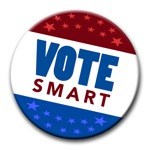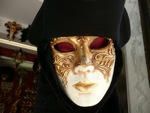 (Update - May 3, 2012: This post has been updated, revised and clarified as a series of posts. The new age-guessing posts can be found at these links: Part 1, Part 2, Part 3, Part 4)
(Update - May 3, 2012: This post has been updated, revised and clarified as a series of posts. The new age-guessing posts can be found at these links: Part 1, Part 2, Part 3, Part 4)
For as long as carnivals have been around, and probably much longer than that, there have been people who have tried to guess another person's age. Age is often not talked about openly, so how would you even begin to go about it?
The first thing that comes to mind for me, naturally, is the mathematical approach. First, there's what I call the algebraic approach to finding someone's age. You have them perform a series of calculations that include their age, and the answer will, in one way or another, secretly tell you how old they are. The most common tricks of this type you'll probably run across is the choose your age and a secret number version, or one of these two approaches. The precise answer that results is great. However, anyone who is familiar with algebra can work out why these work. Even those links themselves point out that the best use for those kinds of tricks is for generating interest in a math lesson.
To add at least some mystery, you could turn to what has become known in magic as the Age Cards. As a matter of fact, you can try a Javascript version of the Age Cards here, and a Java version with a link to the explanation here. Personally, the best way I've come across to present this ancient effect is Werner Miller's Age Cube (as long as you're sure the person isn't 32 or older), as the arrangement of numbers are given a different purpose than just "random numbers". This helps hide the method more effectively.
These mathematical methods are nice, but what about judging their age the classic way, by their appearance and lifestyle clues? Over at the Vat19.com blog, they've posted a very comprehensive guide to accurately guessing someone's age. Of course, having the information is one thing. How do you practice using that information?
Strangely enough, age guessing has caught on as an internet meme. There are many sites with a seemingly endless supply of pictures of real people whose age you can guess. Among the more popular of these sites are AgeGuess, The Age Project, Match>Age, and Guess My Age. The best thing about these sites is that you'll find the more practice you put in with these sites, the more accurate you can get.
However, even if you were to practice every moment you were awake, there's still no way to get a perfect guess every time. Even those carnival workers who guess your age say they'll guess it within a margin of error, such as 2-3 years. The purely mathematical approach offers precision, but can be easy to figure out, thus diminishing the impact of a correct guess. Perhaps there's a happy medium?
Using both approaches together can actually be very effective. Adding mathematics to the appearance/lifestyle approach adds precision, while adding the appearance/lifestyle approach to the math helps take the heat off of the math. One simple way to combine them is to hand a calculator to someone, and ask them to enter any 4-, 5-, 6-, or 7-digit number into the calculator, without telling you what that number is (For example, let's say they enter 32,419). Next, have them multiply that number by 9 (in our example, that results in the number 291,771), and then add their age to that total (Let's say they're 33, so they add 291,771 to 33 to get 291,804). Once they tell you the final total, you can give their correct age!
How is this possible? What you do is mentally add up the digits in the final total (In our 291,804 example, you would mentally add 2+9+1+8+0+4, to get 24). Use this number as a starting point (24, in our example), ask yourself whether this person appears to be that age, and if not, whether they appear older or younger than this number. If the person seems younger than the number you get, subtract 9, and ask yourself if the age seems right again. If the person seems older than the number you get, add 9, and yourself if this seems right again. In our example that results in 24, you would probably look at the guy, and determine that he's older than 24, so you would add 9 to get 33. You look at him, and that seems right, especially as adding another 9 would result in 42, and he appears far too young to be 42. With this result in mind, you state that he's 33! As long as you've practiced with the age guessing sites I mentioned earlier to the point where you can get the correct age within 2 or 3 years, this should pose little problem.
If you're wondering why this works, it's all due to the digital root of the numbers involved. When you multiply any number times 9, you're insuring that you now have some number whose digital root is 9. When the age is added, the result will be a number with the same digital root as the person's age (thanks to the 9 principle). Since any two numbers whose difference is a multiple of 9 will have the same digital root, you can keep adding or subtracting 9 to the result you get until the age seems right. Anyone trying to work this out solely with algebra will realize that all you had to work with was 9x + a (x being the random number, a being the age), and it won't make much sense to them.
Probably the most deceptive version of mathematically determining someone's age involves only days and dates, so it seems like no math could be involved. For this version, you ask someone whether they've already had their birthday, and when it will be (or was) this year. Handing them a perpetual calendar, you ask them to look up the day of the week on which they were born. You ask them not to state the year, but rather just state the day of the week on which they were born. After this, you study their lifestyle and appearance clues, and announce exactly how old they are (or, alternatively, the year they were born)!
As an example, let's say someone tells you their birthday this year was on June 14th. After looking in the perpetual calendar, they tell you that they were born on a Monday. You study the person, and announce (correctly) that they're 43! Are you curious as to how this is possible?
Before you even think of performing this version, you need to be very comfortable performing the classic version of the Day of the Week for any Date feat. You'll also need to have the year keys memorized, as described in this article, in section 3.2.5: Memorizing the Key Numbers. Once you can do that, you'll fully prepared.
Always ask for their birthday in the current year, so that they don't slip and accidentally give you the year they were born. When you're given the month and day, add the month key and day. If you're given June 14th, as in our example, you would add 4 (the key number for June) to 14 (the day) to get 18. Next, when give the day of the week, convert that day of the week to it's key number, and immediately add 42. In our example, the day is Monday, you convert that to 1, and add 42 for a total of 43.
Next, we're going to subtract the month and day total from the adjusted weekday total, and cast out 7's to get a number from 0 to 6. Keeping with our example, we'd perform 43 (adjusted weekday number) minus 18 (the month and day total) to get 25. Casting out 7's (or figuring modulus 7, as math majors would call it) from 25, we get 4 (21 is the largest multiple of 7 under 25, so we do 25-21 to get 4). This single-digit number (4, in our example) will be used as a year key.
Math break: Why did we add 42? As you have learned (or will learn) from the classic date feat, adding or subtracting 7's doesn't substantially change the number (no more than adding or subtracting 7 days from now will change the day of the week), so we need a multiple of 7 for the day adjustment. The largest month key we'll be using is 6, and the largest day we can get is 31, so the largest month and day number we can get is 37 (6+31). From what multiple of 7 can we subtract numbers up to 37, and still get a positive answer? 42 is the answer (Any larger multiple of 7 could also be used, but 42 keeps it minimal).
Once you've figured the year key, you need to look at the person themselves (actually, you've probably been doing this all along). In what age range would you place them? To move our example along, let's say you think the person might be in their late 30s or early 40s. We need to find a year in the age range you've determined whose key number is the same as the year key number you've determined. Turning back to our example, is there a year roughly 40 years ago whose key number is 4?
First, try 40 years ago itself. That's 1968, whose key number is 1. OK, it's not 1968. How about later? 1969 is 2, 1970 is 3, and 1971 is 4! Does 37 work? Look at the person and ask yourself if 37 seems too young. Trying going back from 40 years ago, too. 1967 has a key of 6, 1966 is 5, and 1965 is 4! Hmm, they could also be 43. You can begin to see now why you both need to memorize the year keys, and why you need so much practice determining someone's age. In our example, you would have to ask yourself whether 43 or 37 seems more likely.
With this version, there are a few things you'd have to remember. First, if they're born in January or February, you'll want to add 1 to your key number when checking leap years. If someone who looks to be around 40 tells you they were born on January 12th (0+12=12) on a Friday (5+42=47), you'll get a key of 0 (47-12=35, 35 mod 7=0). Since 1968's key is 1, and your key is 0, you might think that 1968 won't work. However, if you temporarily add 1 to your key number when checking 1968, you'll realize that 1968 is a possibility (By the way, January 12th, 1968 did fall on a Friday). A similar principle applies when working with other centuries, except you'll need to add 0, 2, 4, or 6 to your key number (and not temporarily, as with leap years).
If you're trying to determine a woman's age, and you find two close possibilities (like our 37 and 43 examples above), always, Always, ALWAYS, ALWAYS give the younger of the two possibilities. She'll take it as a compliment, and will never correct you.
It should go without saying, that when performing any of these versions, you should warn someone that their age could possibly be revealed. If they don't approve, move on to something else!

 After developing the iPhone version of Werner Miller's Age Square, I became interested in what other iPhone programs were out there that would interest Grey Matters readers.
After developing the iPhone version of Werner Miller's Age Square, I became interested in what other iPhone programs were out there that would interest Grey Matters readers.



 Due to yesterday's surprise Mental Gym outage, I didn't have as much time as I'd like to prepare today's column. Instead, I'd like to post two original puzzles I've been saving.
Due to yesterday's surprise Mental Gym outage, I didn't have as much time as I'd like to prepare today's column. Instead, I'd like to post two original puzzles I've been saving.
 (Update - May 3, 2012: This post has been updated, revised and clarified as a series of posts. The new age-guessing posts can be found at these links:
(Update - May 3, 2012: This post has been updated, revised and clarified as a series of posts. The new age-guessing posts can be found at these links: 

 Once you've
Once you've 

